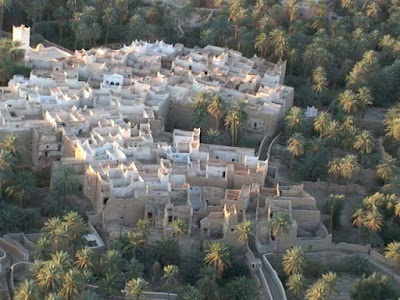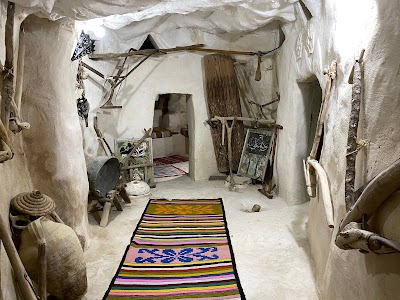Traditional Libyan Granaries (المخازن التقليدية)
Related Places
Overview
Introduction to Traditional Libyan Granaries
Nestled in the heart of the Nalut District, the **Traditional Libyan Granaries**, or **المخازن التقليدية**, are a captivating testament to the ingenuity and resourcefulness of the Berber people who have inhabited this region for centuries. These granaries, often referred to as **"ghurfa"**, are not merely storages for grains but rather intricate architectural marvels that reflect the cultural heritage and agricultural traditions of Libya. For foreign travelers, visiting these granaries offers a unique glimpse into the local way of life, showcasing how communities have adapted to the arid landscape of the Libyan mountains.
The granaries are typically constructed from local stone and mud, providing excellent insulation against extreme temperatures. The design features thick walls and small openings that keep the interiors cool during the scorching Libyan summer. As you wander through these historic structures, you will notice that many are built into the hillside, a clever use of the natural landscape that adds to their charm. The architecture often includes multiple floors, with each level dedicated to storing different types of grains, such as barley, wheat, and corn, ensuring that the community’s food supply is well-preserved and protected from pests.
Cultural Significance
The cultural significance of the Traditional Libyan Granaries extends far beyond their functional purpose. They are emblematic of the Berber identity and agricultural heritage, representing a lifestyle that has been passed down through generations. Each granary is a community project, symbolizing cooperation and collective effort among the villagers. Visitors can engage with local residents, who are often eager to share stories about their ancestors and the traditional practices that have sustained their families for centuries. This interaction provides a deeper understanding of the region's rich history and the importance of agriculture in Libyan culture.
In addition to their historical and cultural value, these granaries are also crucial for preserving local biodiversity. By storing various grains, the Berber people have maintained traditional agricultural varieties that are well-suited to the local climate. Travelers interested in sustainable practices and food security will find it fascinating to learn how these ancient techniques continue to play a role in modern agriculture.
Visiting the Granaries
When planning a visit to the Traditional Libyan Granaries, there are a few practical tips to enhance your experience. The best time to visit is during the cooler months, from October to April, when the weather is more pleasant for exploring the outdoor landscapes. The nearest town, **Nalut**, serves as a great base for travelers, offering accommodations and amenities while still being close to the granaries. Guided tours are often available, led by knowledgeable locals who can provide insights into the history and functions of these remarkable structures.
As you explore the granaries, don’t forget to take in the breathtaking views of the surrounding mountains and valleys. The landscape is dotted with olive trees and terraced fields, showcasing the integration of agriculture and nature. The sunsets in this region are particularly stunning, casting a warm glow over the ancient stone walls and creating a picturesque setting perfect for photography enthusiasts.
Conclusion
In summary, the Traditional Libyan Granaries in the Nalut District are not just functional buildings; they are a vital part of Libya's cultural fabric and agricultural heritage. For foreign travelers, this site offers a chance to connect with the local community, learn about sustainable practices, and witness the beauty of Berber architecture. A visit to these granaries is sure to enrich your understanding of Libya and leave you with lasting memories of its stunning landscapes and warm-hearted people.





